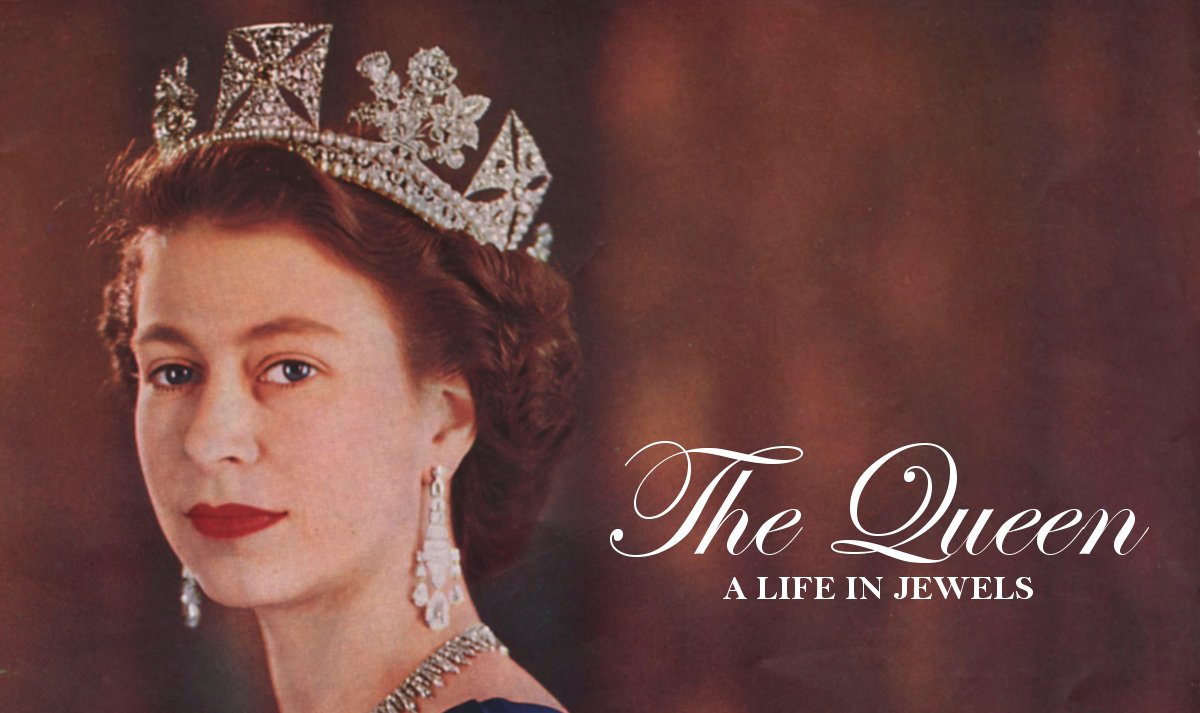
Of all the important days in the Queen’s life, few were more glittering, more sparkling, than Coronation Day in 1953. One of the jewels she wore that day, the Imperial State Crown, will be visible on the Queen’s coffin over the next several days as well.
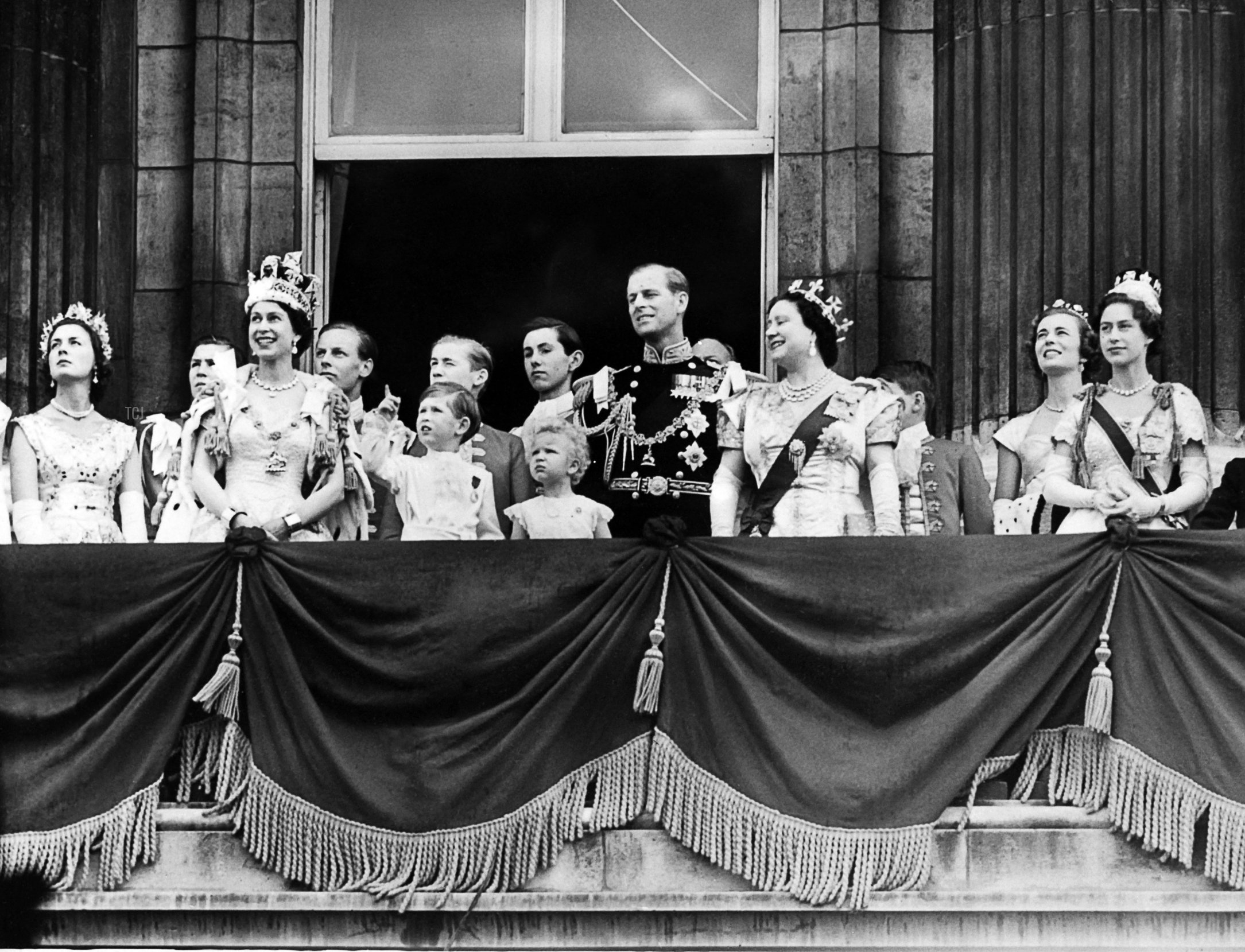
Sixteen months after the death of her father, King George VI, and her accession to the throne, Queen Elizabeth II was crowned in a glittering ceremony at Westminster Abbey in London. The day, June 2, 1953, was one of the most memorable occasions of the era, with thousands gathered in the Abbey and thousands more thronging the streets of London to catch a glimpse of the royal procession or the family on the balcony of Buckingham Palace.
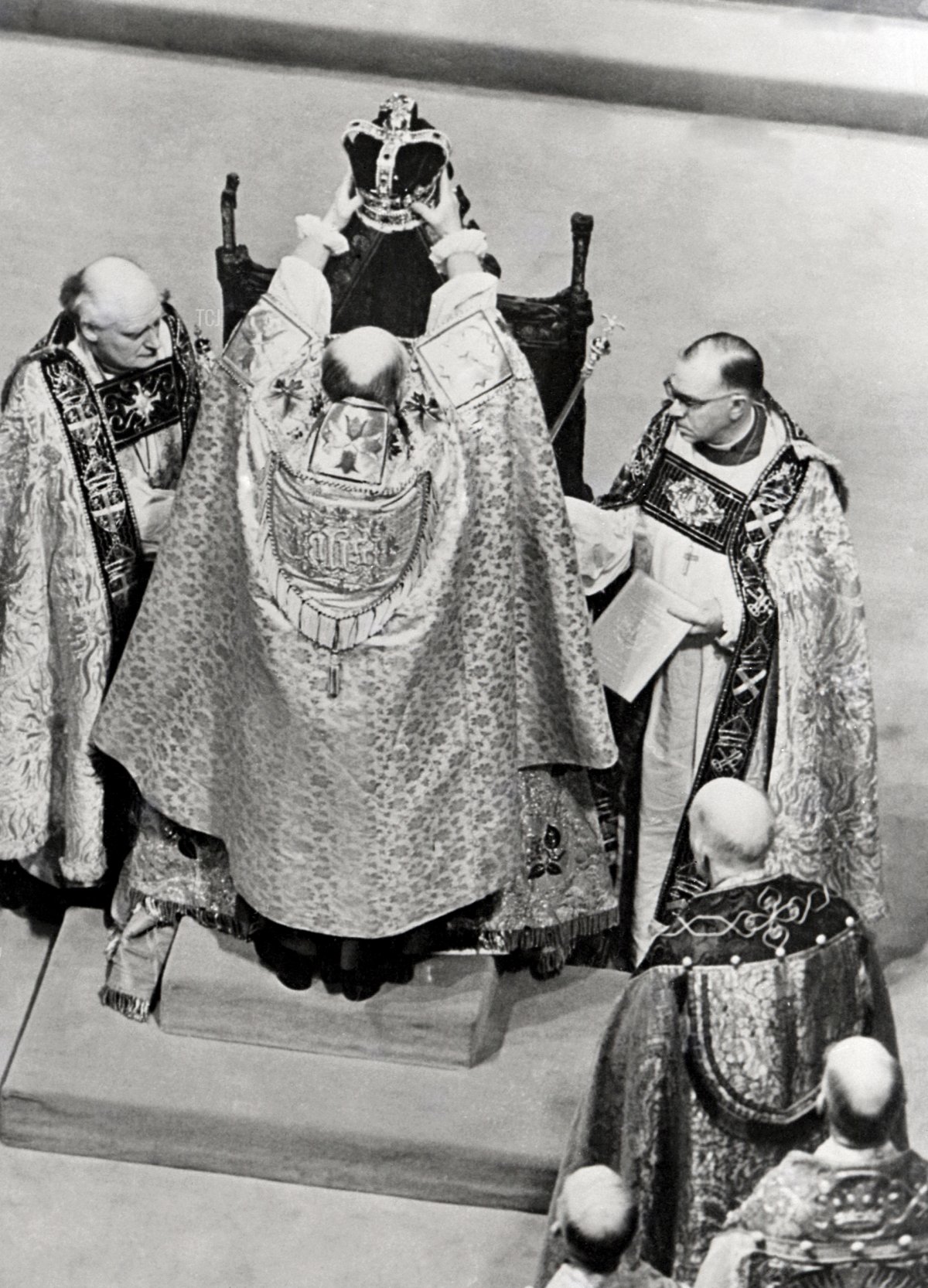
By tradition, the British monarch is crowned using St. Edward’s Crown, the oldest and heaviest crown in Britain that is still being used today. Like most of the crown jewels, the crown dates to the restoration period. It was made in 1661, based on the design of a medieval crown that bore the same name. That original crown was sold during the interregnum, following the execution of King Charles I, and the new one was made following the restoration of King Charles II. We covered the history of the crown in much more detail in this article.
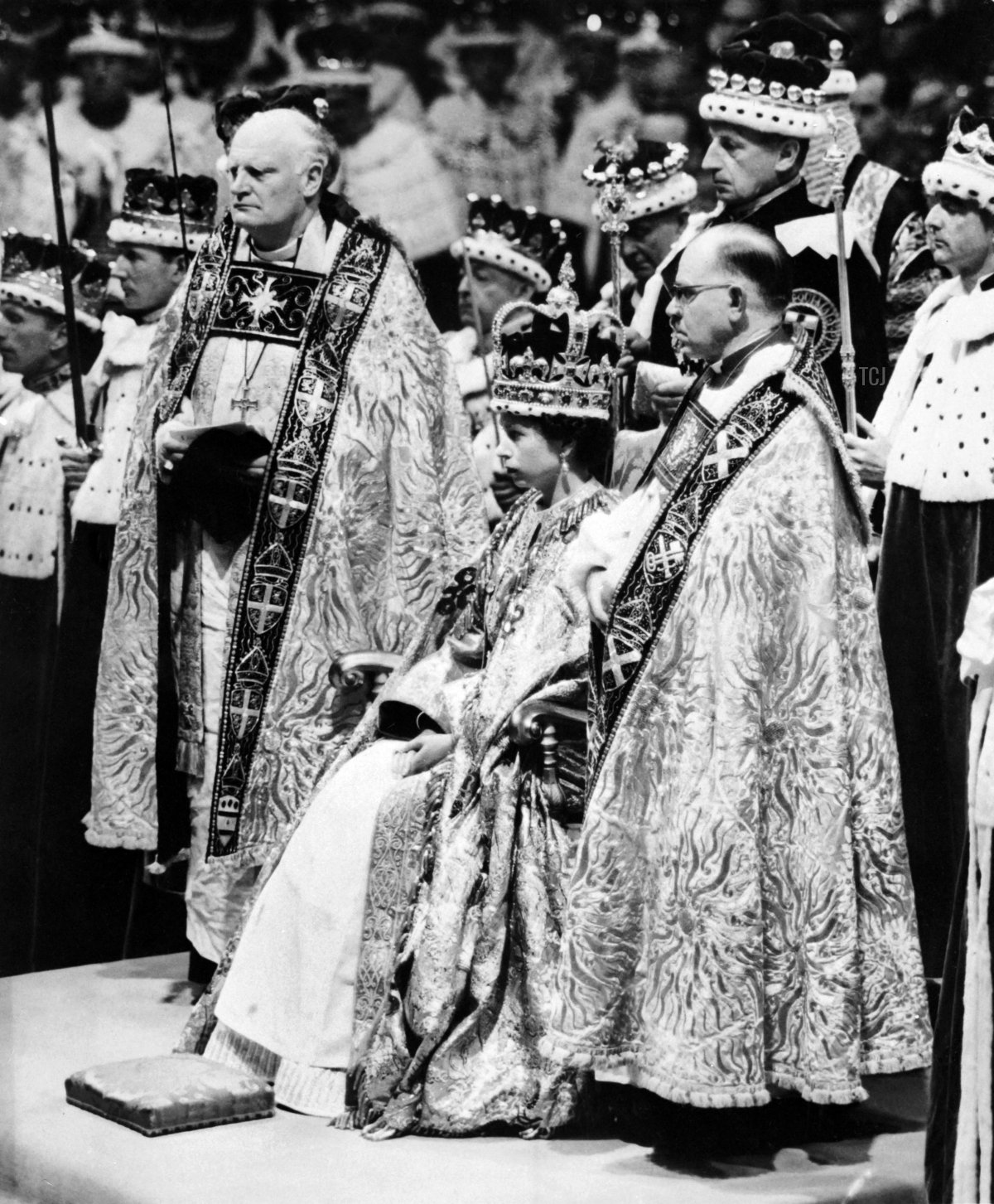
The Archbishop of Canterbury, Geoffrey Fisher, placed St. Edward’s Crown on Elizabeth’s head during one of the most memorable moments of the coronation ceremony. The crowd shouted “God Save the Queen!” three times as the crown touched the monarch’s head. This was the one and only time that the Queen wore this particular crown. It is only used for coronations, and it is kept at all other times in the Tower of London. During the Queen’s reign, the crown only left the Tower on one other occasion: the 60th anniversary of the coronation in 2013, when it was briefly displayed at Westminster Abbey and filmed for a special television documentary.
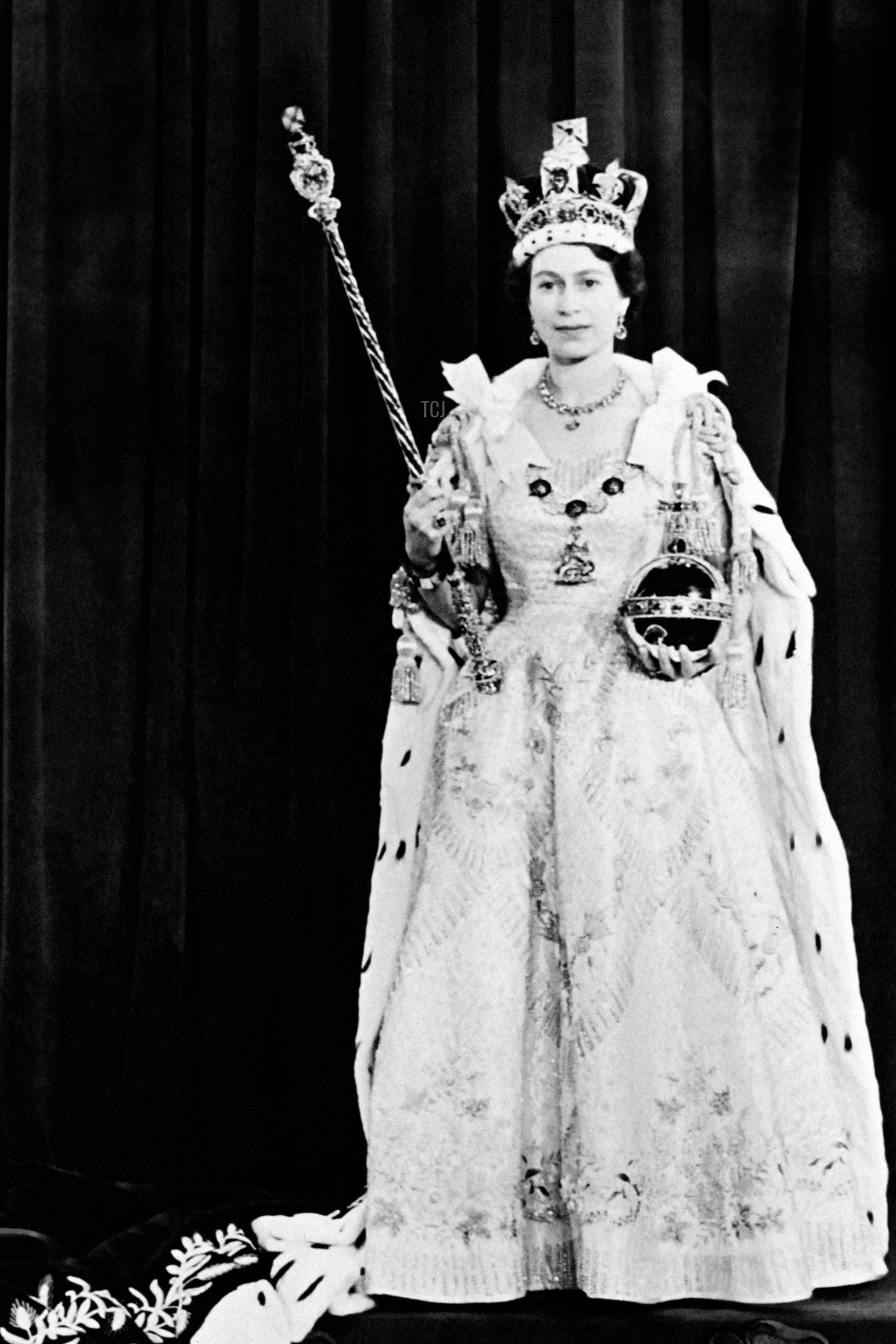
At the end of the coronation ceremony, the heavy St. Edward’s Crown is swapped out for the lighter Imperial State Crown. The Queen wore the latter as she departed from the Abbey, and for the official photographs and balcony appearances that followed. The Imperial State Crown was made in 1838 for the coronation of Queen Victoria, based on the design of earlier crowns. While St. Edward’s Crown is the coronation crown, the Imperial State Crown is the “working” crown—the one, for example, worn by the Queen at almost every State Opening of Parliament during her reign. (There were two exceptions to this rule: two monarchs, Victoria and Edward VII, were actually crowned with the Imperial State Crown during their coronation ceremonies. We discuss this in more detail over here.)
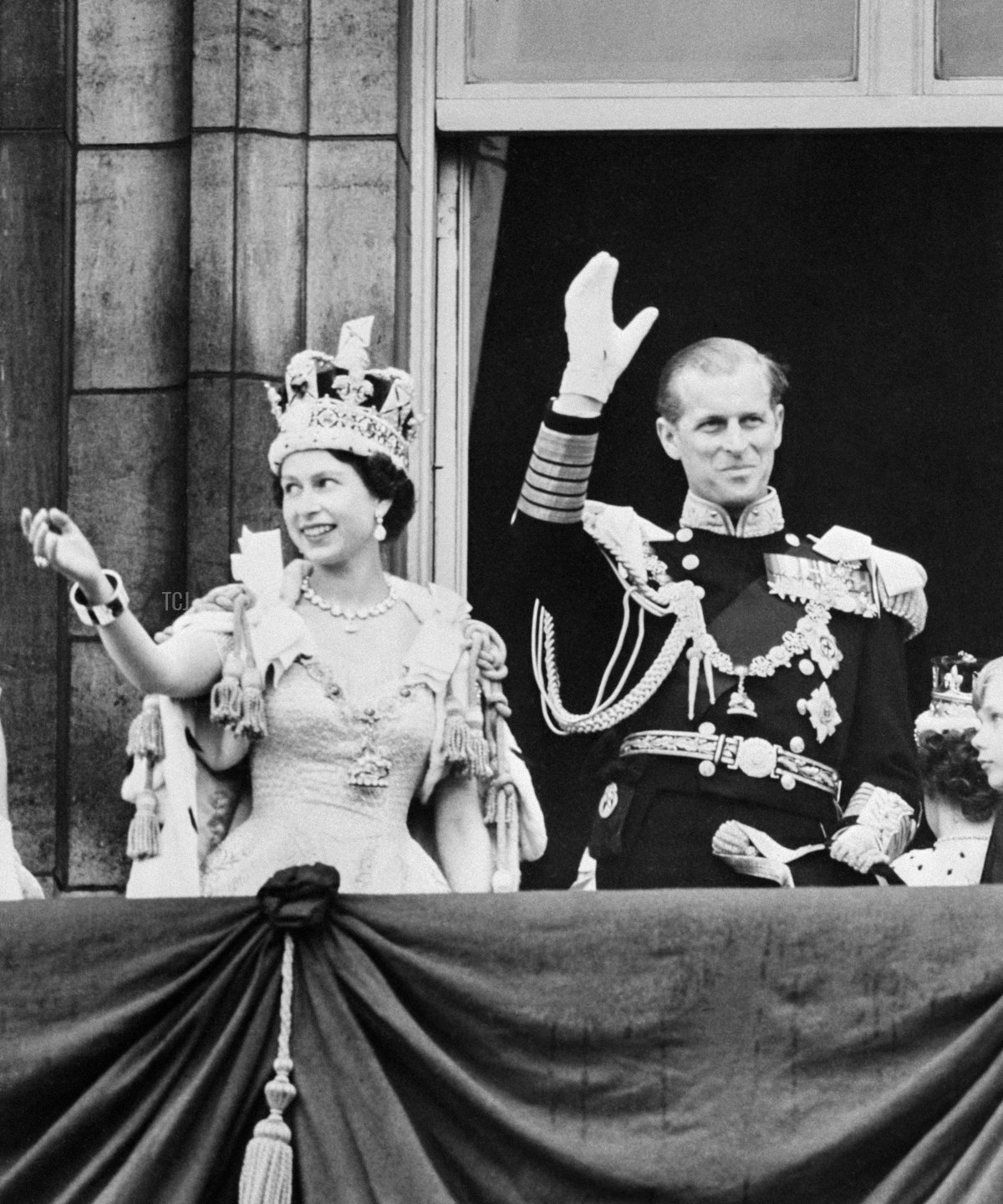
Along with the two crowns, Elizabeth II also wore several other pieces of important jewelry during her coronation ceremony. These included the Coronation Necklace and Earrings, made for Queen Victoria in 1858; the Sovereign’s Ring, made for the coronation of King William IV in 1831; and the Coronation Armills, a pair of gold bracelets made in 1953 for the Queen as a gift from several Commonwealth nations.
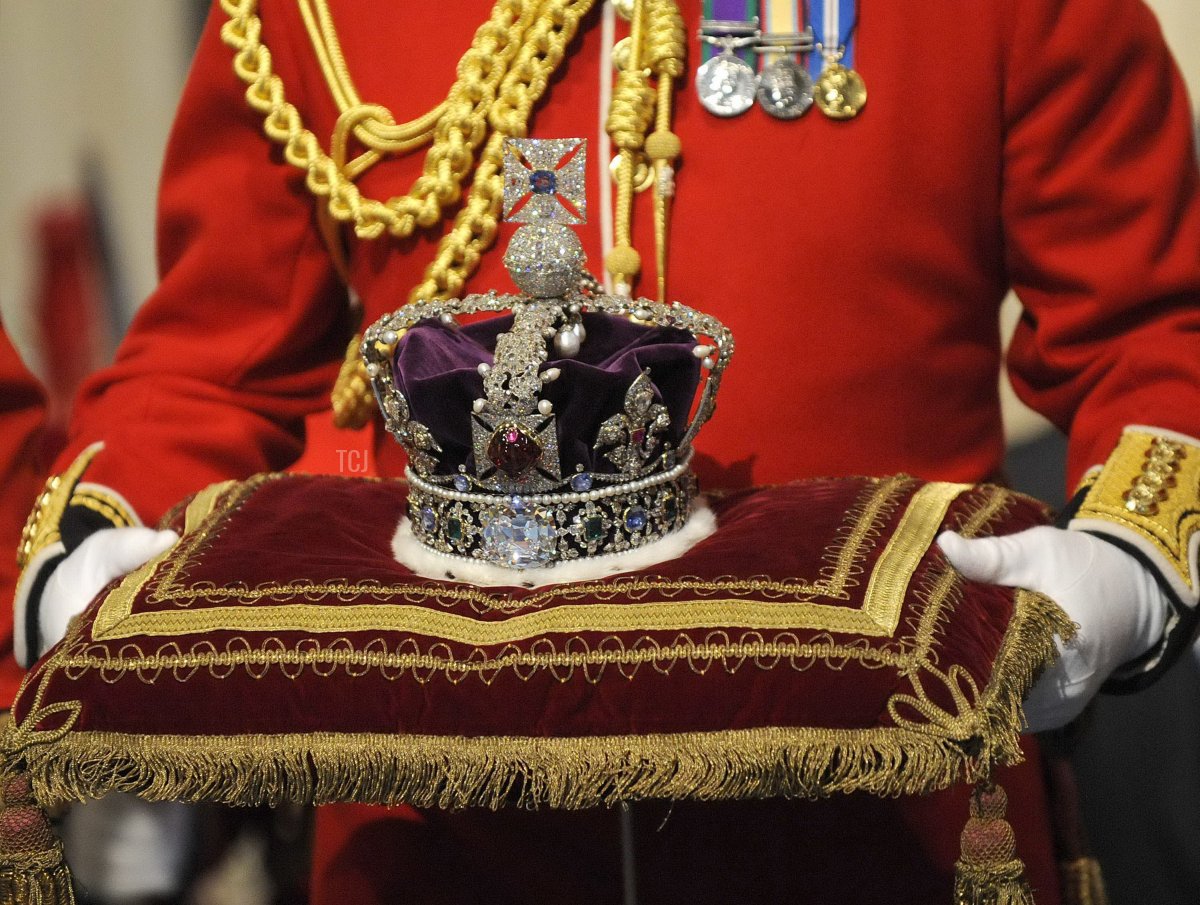
But the most recognizable piece of crown jewelry associated with the Queen is, undoubtedly, the Imperial State Crown. The nineteenth-century crown is set with several important gemstones. The front of the crown is set with two of the most recognizable: the Black Prince’s Ruby, a 170-carat spinel that is said to have been worn by King Henry V at the Battle of Agincourt, and the Cullinan II Diamond, a 317-carat stone cut from the great Cullinan Diamond.
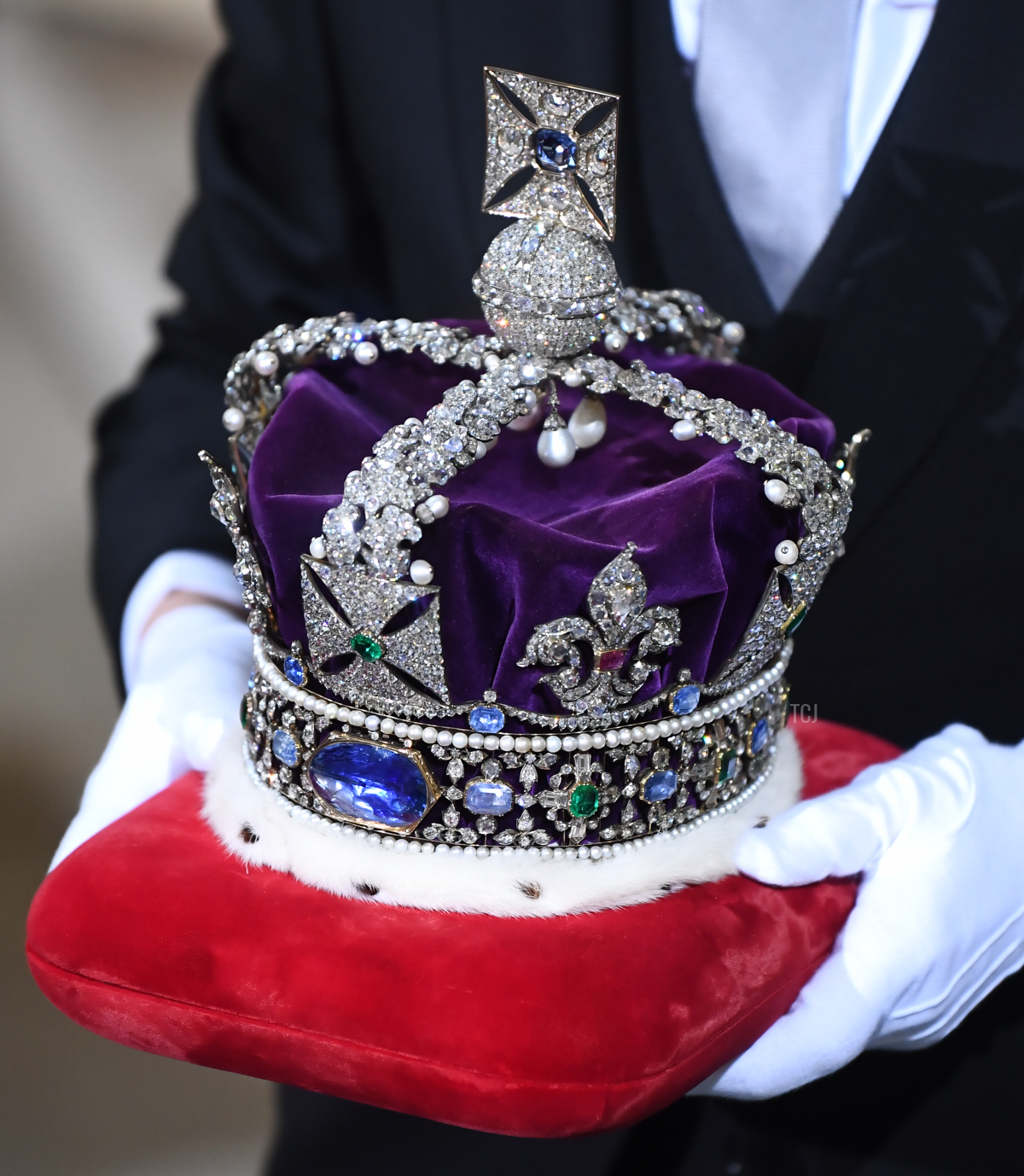
When the Cullinan II was added to the crown in 1909, another great stone, the Stuart Sapphire, was moved to the back of the piece. The 104-carat blue gemstone is said to be the same gem taken by King James II when he fled the country after the Glorious Revolution in 1688, and which was later reacquired during the reign of King George IV.
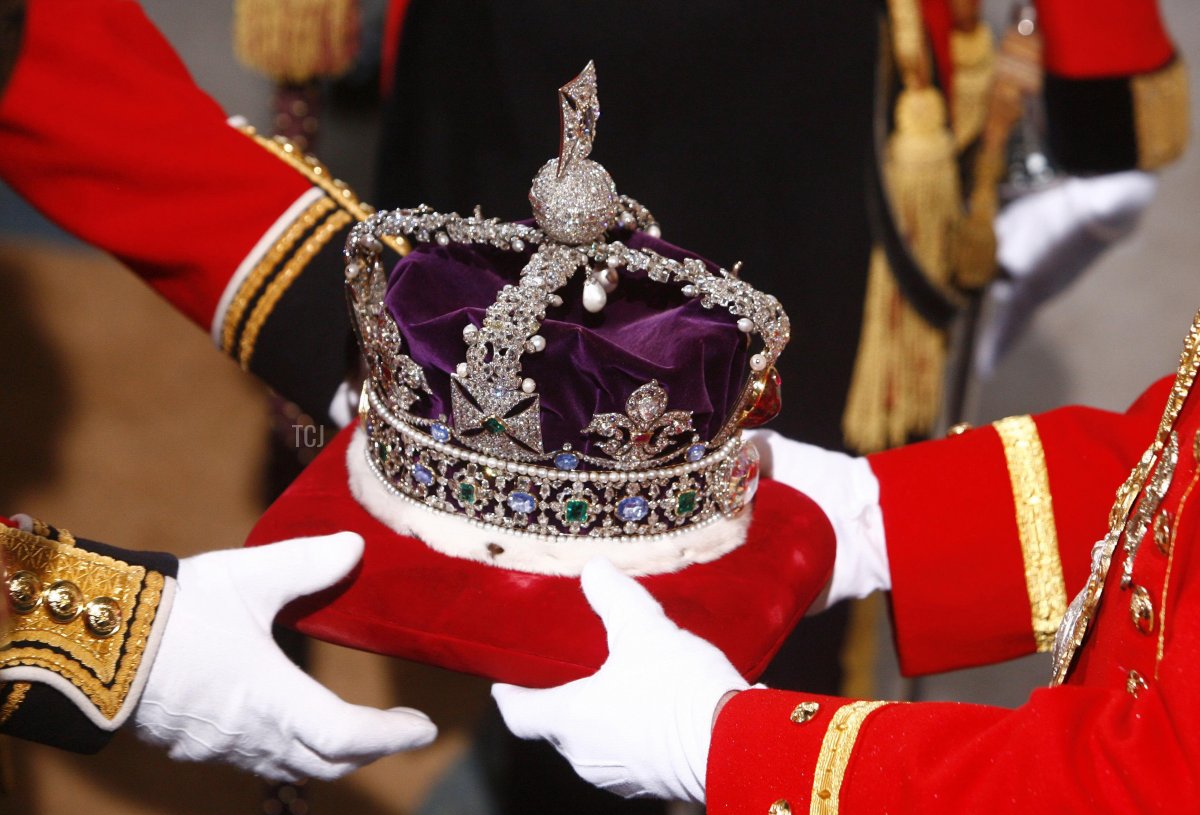
Thousands of other gemstones also sparkle from the crown. From the monde (the round orb set on the crown’s arches), four more important jewels are suspended. Though their provenance cannot be confirmed, these four pearls are said to have belonged to Queen Elizabeth I.
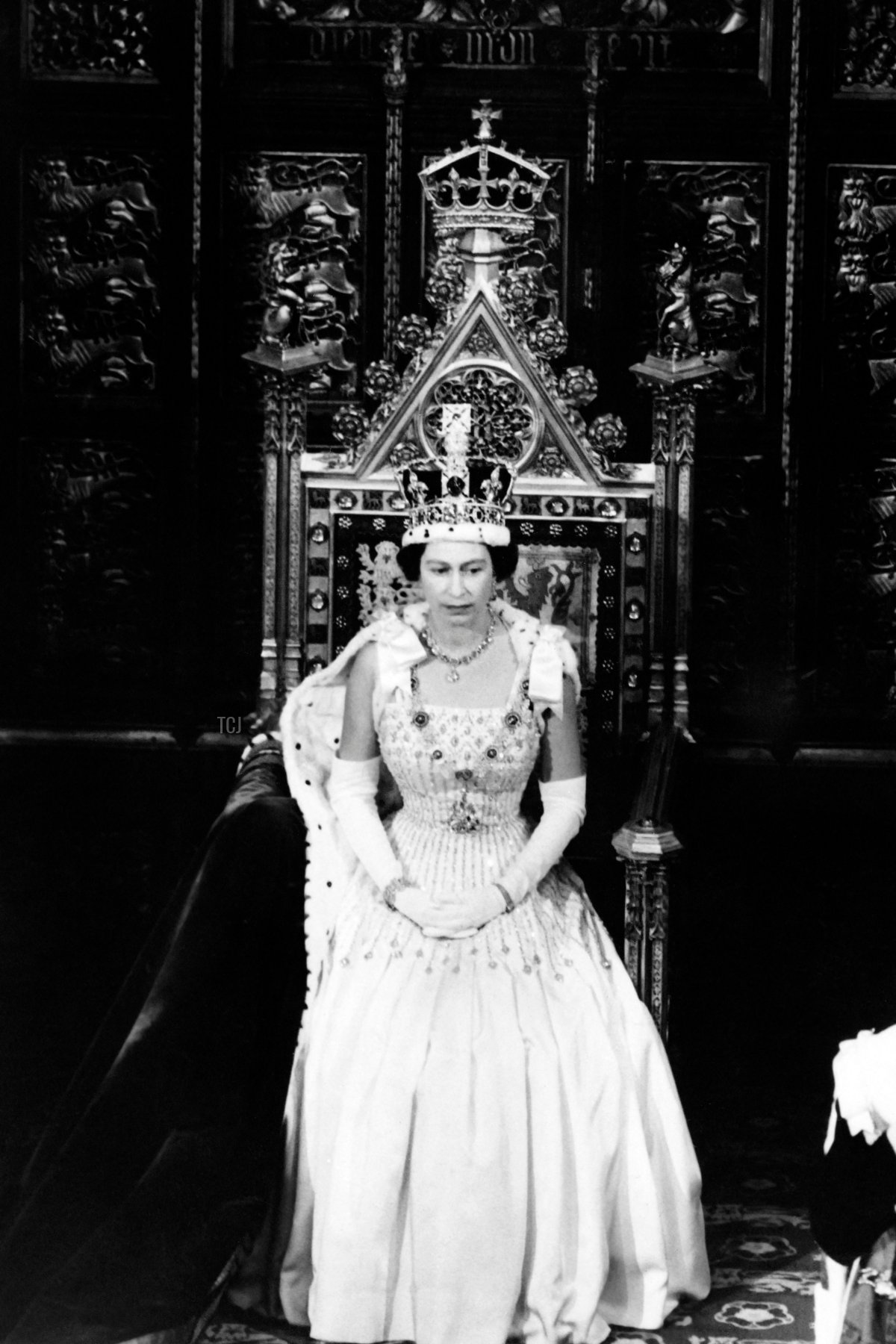
For decades, the Queen sparkled in the Imperial State Crown as she delivered her speech from the throne during the State Opening of Parliament in London. Here, she wears the crown during her speech at the event in April 1966. She’s also wearing a Norman Hartnell dress—the same one, in fact, that was later worn by Princess Beatrice on her wedding day.
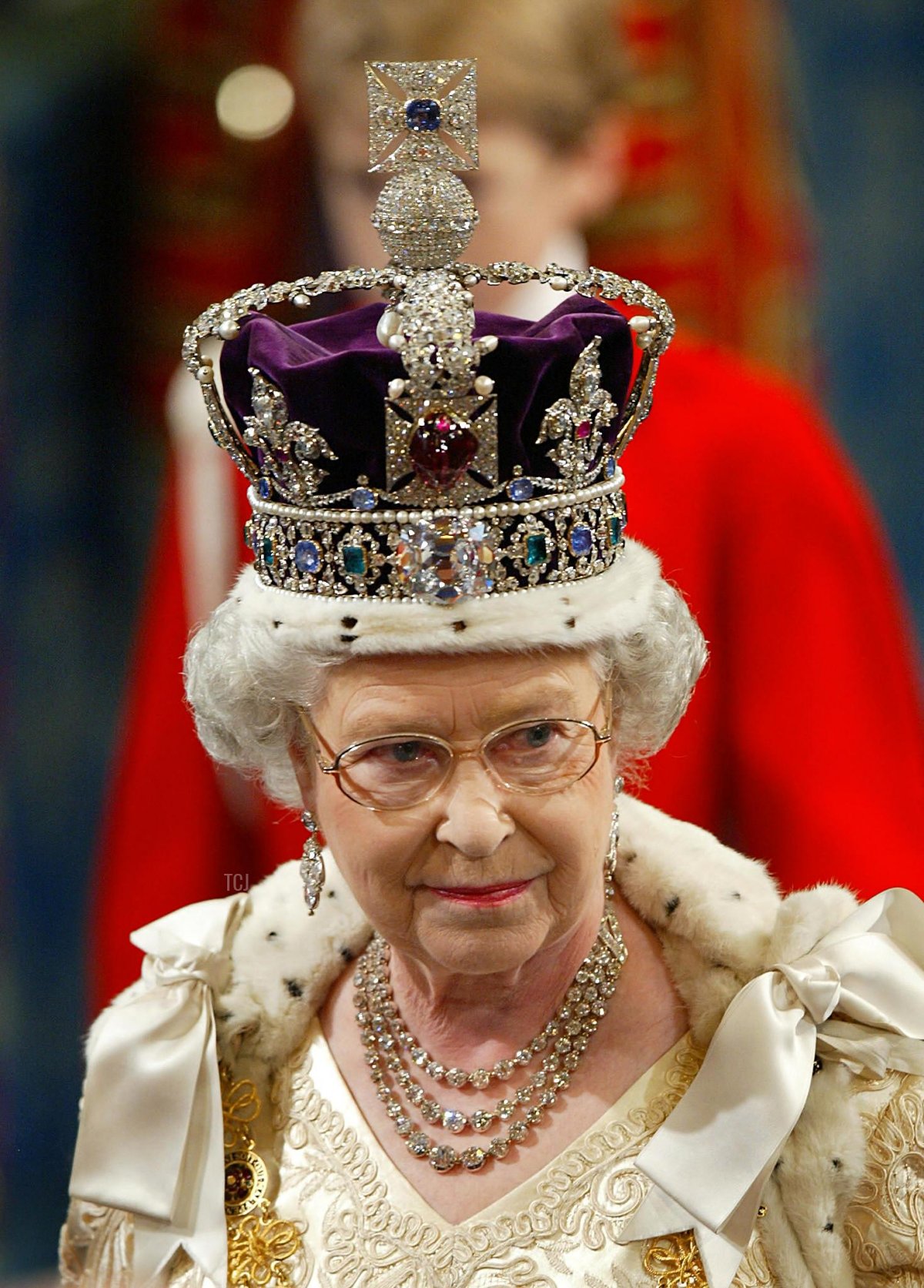
The images of the Queen wearing the Imperial State Crown are some of the most familiar and iconic of her reign. Here, she wears the crown (plus the Antique Girandole Earrings and the Diamond Festoon Necklace) at the State Opening of Parliament in November 2002.
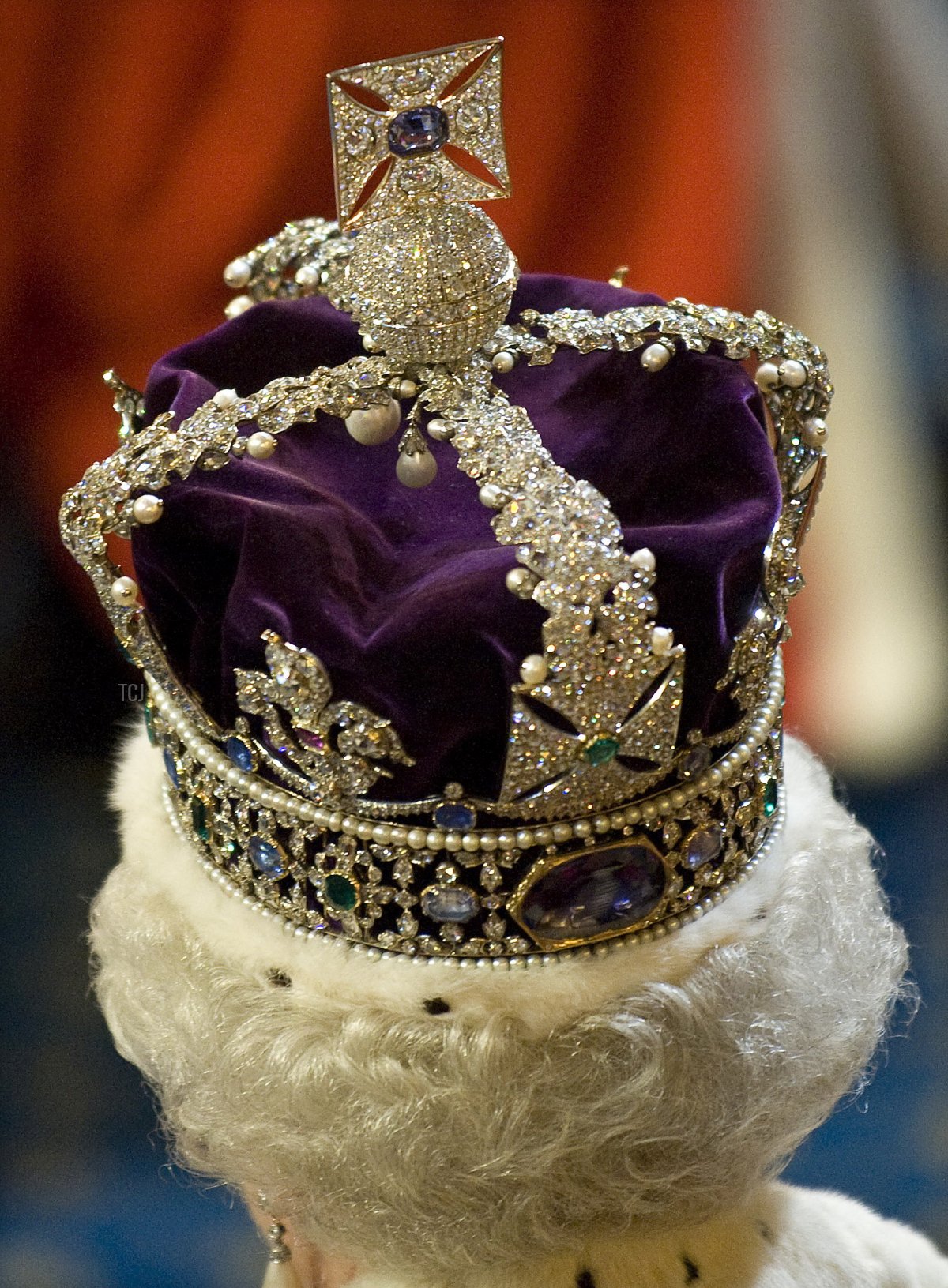
And here, she wears the crown for the same occasion in May 2010. She wore the crown for the final time in public at the State Opening of Parliament on May 18, 2016. Since then, the crown has been present for the event, but not worn. And this week, we’ll see the Imperial State Crown resting on Her Majesty’s coffin during the lying in state at Westminster Hall, which begins later today.
Leave a Reply
You must be logged in to post a comment.